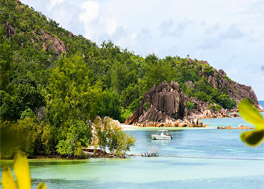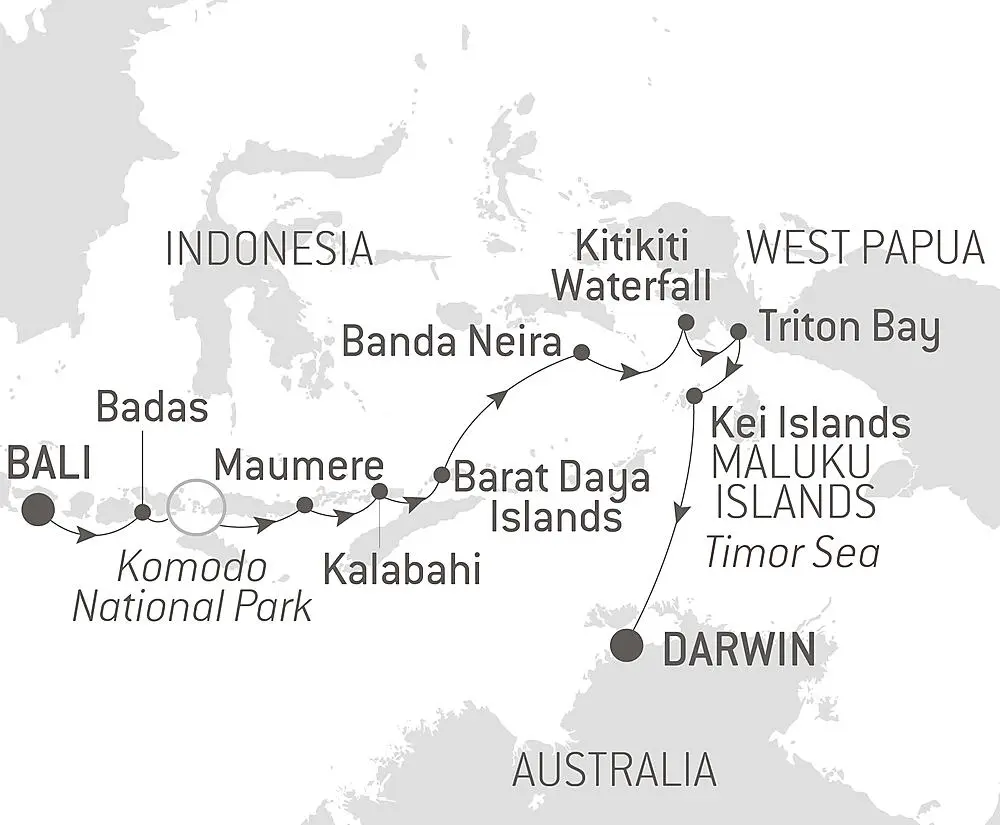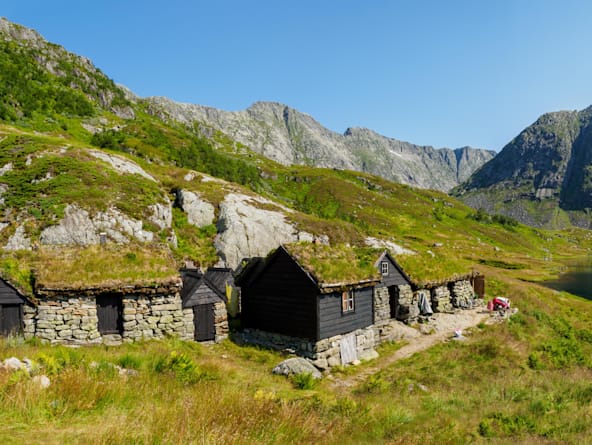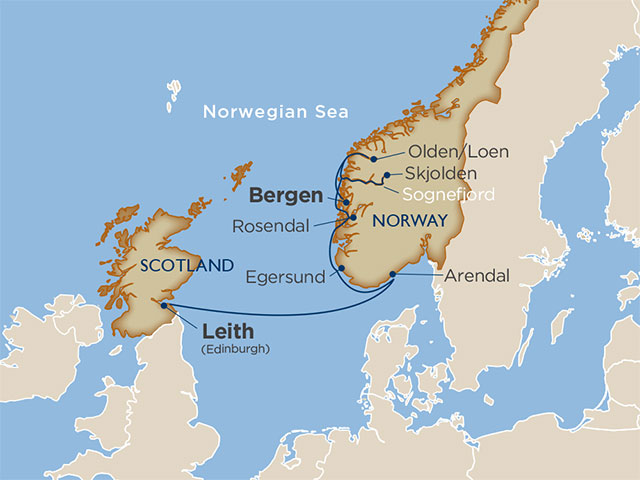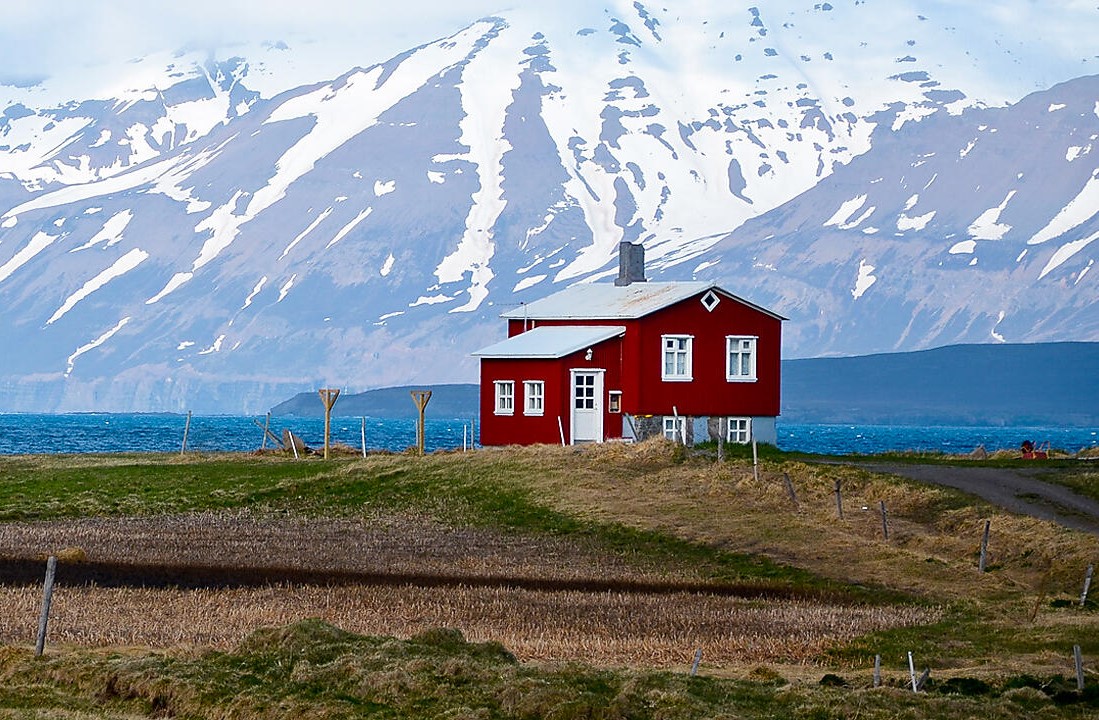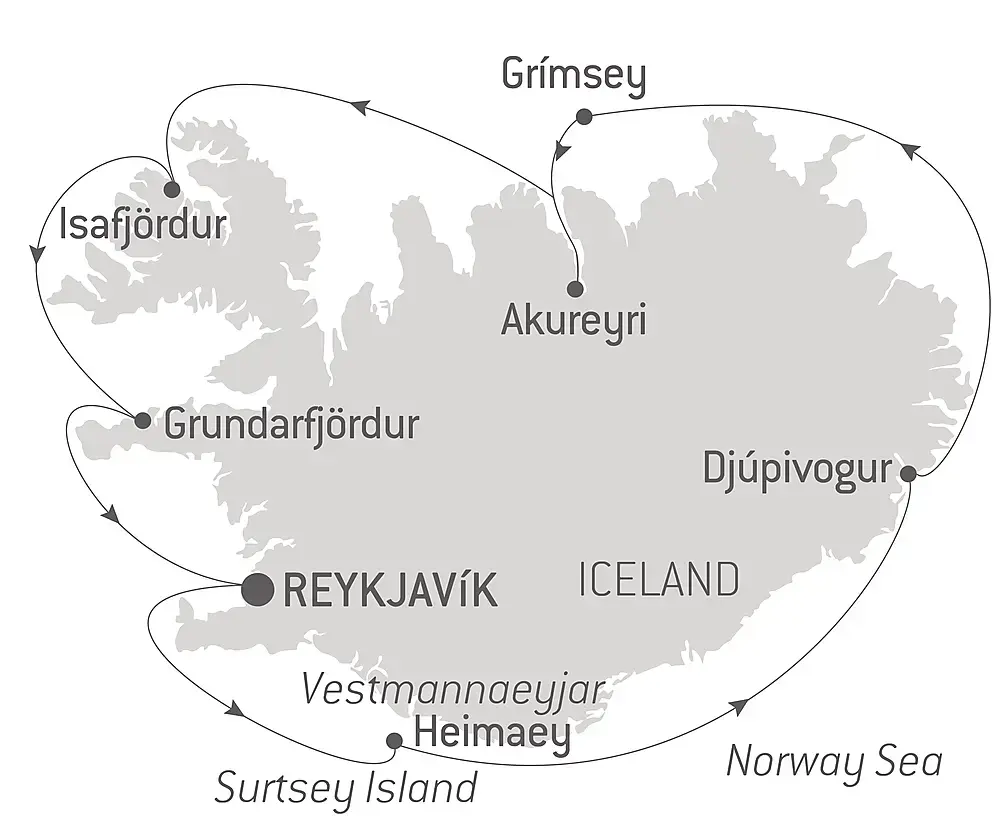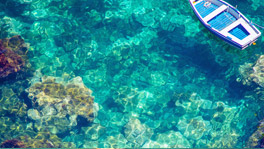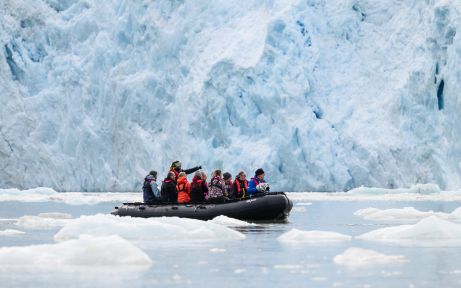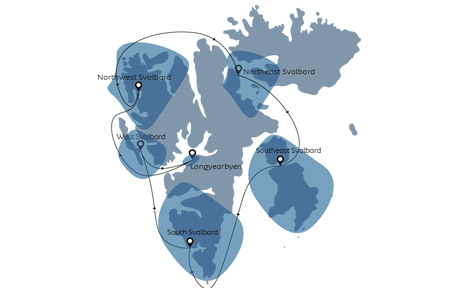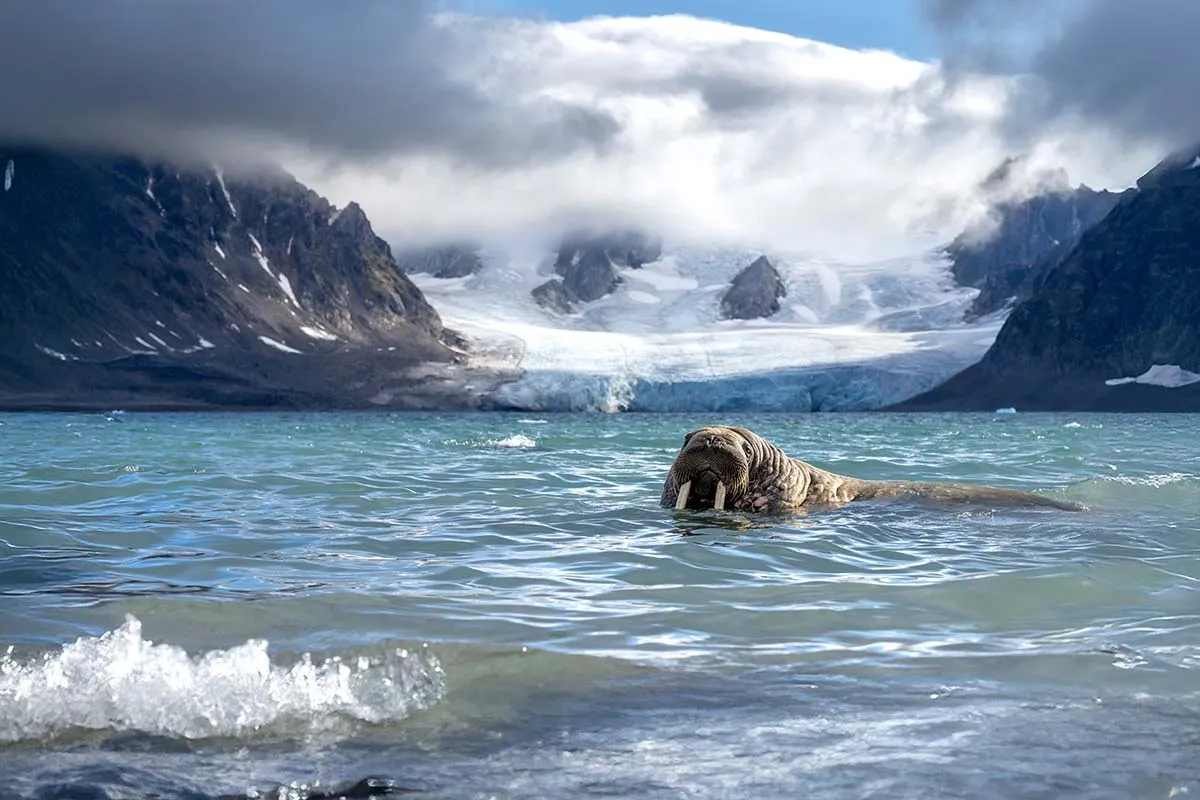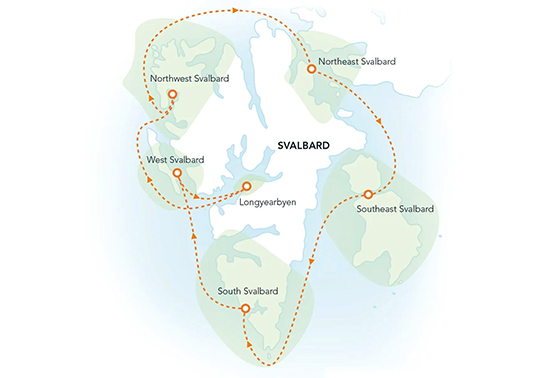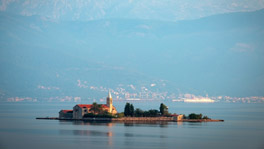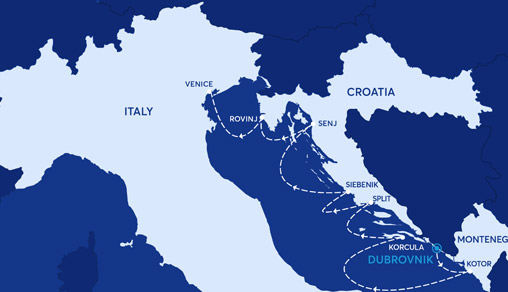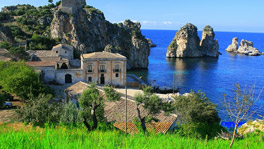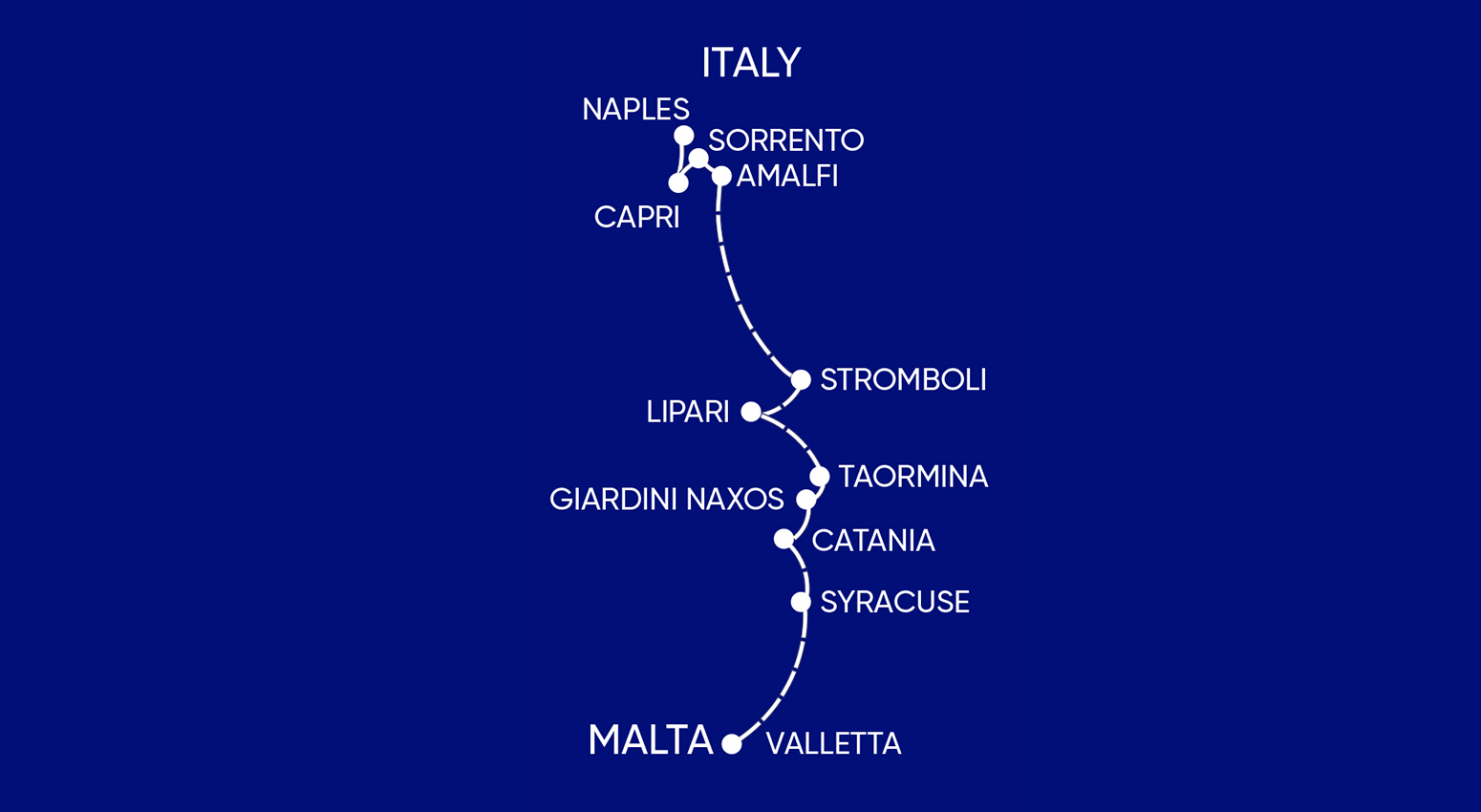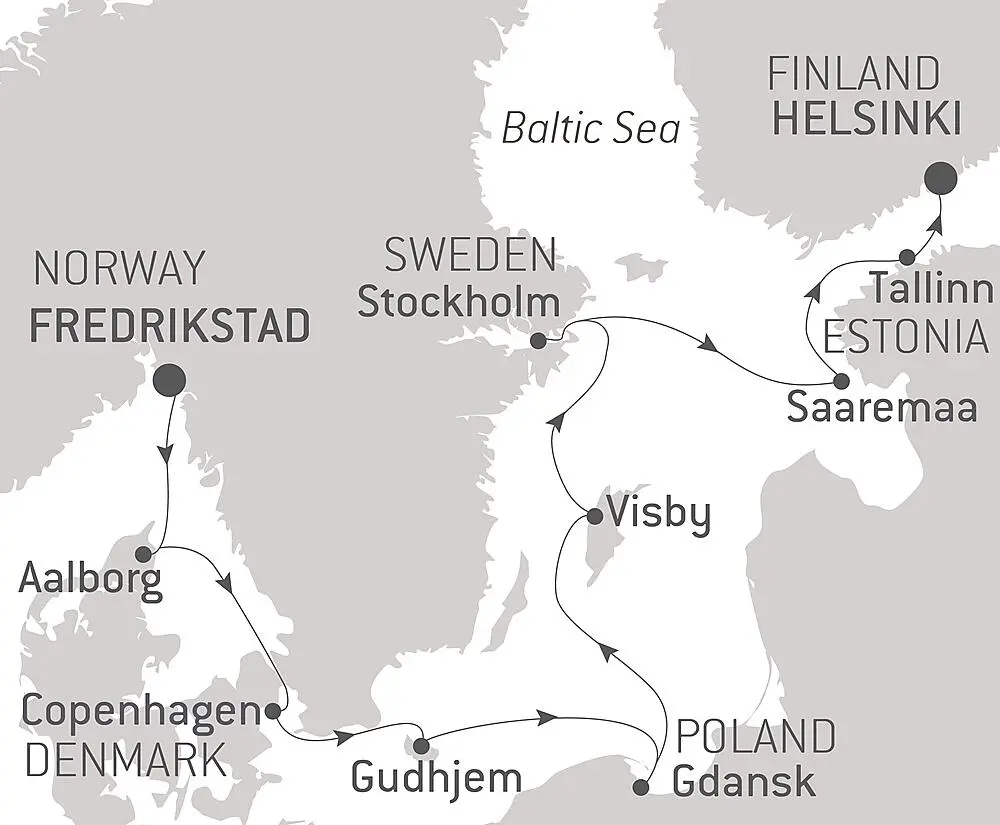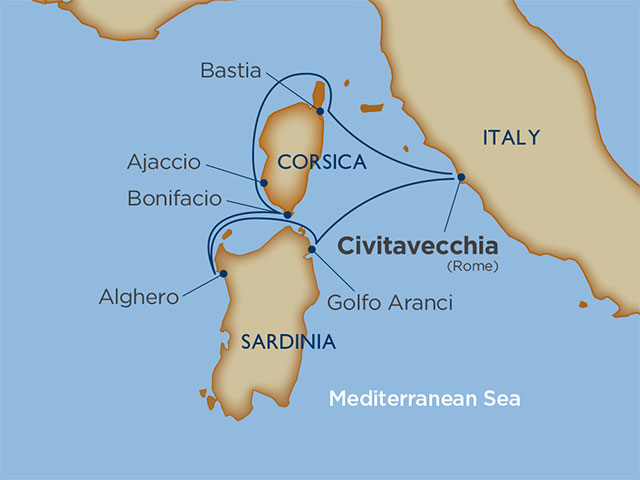
Expert guidance for your cruise vacation!
Let us connect you with our cruise expert to help you to plan the best vacation at the lowest possible price. For fastest service, call us at +91 9920688575
Tropical Indonesian Odyssey
Cruise Line: Ponant Cruises
Ship: Le Soleal
Sailing Dates: Jun 17 2026
Port: Benoa, Bali to Darwin
Tropical Indonesian Odyssey

Day 1 - Benoa, Bali
If it's a taste of exotic authenticity you're after, prepare to be spell-bound by the island of Bali, tucked away in the heart of the Indonesian archipelago. The beauty and diversity of its landscapes, the depth and richness of its cultural heritage and the plethora of activities on offer here make Bali a little slice of heaven on Earth. The island's southern coast enthrals with its white sand beaches, its picturesque little fishing villages such as Benoa, and its hills patchworked with terraced rice paddies further inland. Nicknamed 'the Island of Gods' for its sumptuous temples, Bali is the beating heart of Indonesian Hinduism.

Day 2 - Badas, Sumbawa
The port of Badas is part of the greater township of Sumbawa Besar, on the island of Sumbawa. Like most of Sumbawa the people hold their culture strong as a major part of their identity. The island has a strong influence from the Makassarese of Sulawesi, who over the centuries have introduced a lot of their culture into Sumbawa. Join your expedition team and local guides for a tour by bus to Pamulung Village where you will be welcomed by the head of the village and have the opportunity to witness first-hand the local traditions of rice pounding, weaving and also witness a wedding procession. Your visit will conclude with an exciting Sumbawa buffalo race, an event that will be held in honour of our visit. Â

Day 3-4 - Komodo National Park
Between the islands of Sumbawa and Florès, Komodo National Park welcomes you to discover its natural wonders. At the very heart of the Indonesian archipelago, the three islands that form it â Komodo, Rinca and Padar - owe their renown to the famous eponymous dragons, enormous lizards over two metres long, which live in its grassy savannah. This jagged and hilly volcanic territory belonging to the Sunda Islands is a UNESCO World Heritage Site because of its incredible terrestrial and marine biodiversity. Admire its palette of colours, intermingling the sparkling whites of the beaches, the deep blues of the coral-filled water and the soft greens of its pastures.

Day 5 - Maumere, Flores
Floresians have an ancient culture stretching back millennia before the first arrival of Europeans in search of trade opportunities. Their history is shared through oral traditions and is recreated in song and dance. The mountainous terrain of Flores has preserved the diversity of cultures and Maumere serves as the capital of the Sikka district and main trading port. Few tourists make it to Maumere with most stopping at Labuan Bajo and heading west to the islands of Komodo. Consequently, Maumere and has kept its charming atmosphere, an eclectic mix of a bustling trading town and a coastal paradise. Join your expedition team and local guides for a tour by local transport to the markets and tribal villages in the hinterland of Maumere.

Day 6 - Kalabahi, Alor
The unique culture of the Alorese continues among the Takpala indigenous group who have preserved their traditional architecture and ceremonies. The island of Alor is also known as the island of a Thousand Mokoâs. The Moko is a small bronze kettledrum which is believed to have originated from the Dong Son culture of Vietnam. However, it remains a mystery as to how these prehistoric Dong Son drums arrived in Alor. Local legend says that the Mokoâs were discovered buried in the ground, and indeed mokos are still being uncovered today. Join the expedition team and local guides for a tour by local transport to Takpala village, the Museum of a Thousand Mokos and the thriving main market of Kalabahi.

Day 7 - Barat Daya Islands
If you are looking for exoticism and authenticity, then you will be captivated by the Barat Daya Islands, an Indonesian archipelago lying to the east of the Lesser Sunda Islands, bathed by the Banda Sea and surrounded by coral reefs. With their fine sandy beaches, marine environments, preserved nature and paddy fields, these islands in the Maluku archipelago are a real concentration of the beauty South-East Asia has to offer. A lush environment in which fauna and flora flourish. Notably, there are almost 162 different bird species including four endemic ones and three endangered ones.

Day 8 - Banda Neira, Maluku Islands
From age-old traditional cultures and ancient vestiges, to coral reefs and lush green jungle⦠The attractions of the remote Banda archipelago seem endless. Better known as the legendary âSpice Islandsâ of the Ancient World, these small volcanic landmasses were the fabled prize of colonial powers for more than four centuries. Every colonial power of significance fought for control of these ten small islands that today have become largely forgotten. Walking the streets of Banda Neira is a surreal experience as your eyes are drawn to the eclectic mix of Portuguese, Dutch and British architecture, the remnants of a rich and tumultuous history. It is without doubt the most historically significant and interesting of all the âSpice Islandsâ.

Day 9 - Kitikiti Waterfall, Mommon
North of Triton Bay, in the Indonesian province of West Papua, lie the Bomberai Peninsula and Sebakor Bay. A real paradise for divers, this protected, authentic and very wild area boasts an exceptional biodiversity. Here, you will be able to admire the superb Kitikiti Waterfall where you could enjoy a swim or snorkel surrounded by lush nature, both on land and under water.

Day 10 - Triton Bay, West Papua
Triton Bay is one of three regions in Indonesiaâs West Papua province that comprise the Birdâs Head Seascape (the other two are Raja Ampat and Cenderawasih Bay), which is now considered by marine biologists to be the epicentre of the Coral Triangle. It contains more fish and coral species than anywhere else on the planet. Its unparalleled marine biodiversity and endemism, habitat richness, and relatively intact nature of its ecosystems are unique. Join your expedition team for a zodiac voyage through the spectacular rainforest capped karst islands. Later in the day enjoy the opportunity to explore the richness of the underwater realm.

Day 11 - Kei Islands, Maluku Islands
The Kei Islands are blessed with kilometres of stunning, yet almost entirely empty, white-sand beaches and a deeply hospitable population. Beneath the mostly Christian facade, Kei culture is fascinatingly distinctive. Local history holds that ancestors of contemporary Kei islanders came from Bali, part of the expanding Hindu Majapahit kingdom from the western archipelago. Enjoy a day of swimming and snorkelling on an idyllic uninhabited picture postcard tropical island.

Day 12 - At sea
During your journey at sea, make the most of the many services and activities on board. Treat yourself to a moment of relaxation in the spa or stay in shape in the fitness centre. Depending on the season, let yourself be tempted by the swimming pool or a spot of sunbathing. This journey without a port of call will also be an opportunity to enjoy the conferences or shows proposed on board, depending on the activities offered, or to do some shopping in the boutique or to meet the PONANT photographers in their dedicated space. As for lovers of the open sea, they will be able to visit the shipâs upper deck to admire the spectacle of the waves and perhaps be lucky enough to observe marine species. A truly enchanted interlude, combining comfort, rest and entertainment.

Day 13 - Darwin
Darwin is located in Australiaâs Northern Territory which is also known as the âTop Endâ. It is the capital city and the most populated town of the Northern Territory. Darwin is a beautiful tropical city, a melting pot of people and cultures, over 50Â different cultures live and work side by side that prides itself in its unique and friendly laid-back lifestyle. Come discover the townâs still recent history through its emblematic buildings such as the new Parliamant House opened in 1994, a magnificent example of tropical architecture or Admiralty House declared heritage place, a tropical-style home elevated on stilts that has survived two cyclones and numerous air raids.
7 Days - Norway's Southern Splendors
Cruise Line: Windstar cruises
Ship: Star Legend
Sailing Dates: Jun 20 2026
Port: Leith (Edinburgh), United Kingdom to Bergen
7 Days - Norway's Southern Splendors
Icelandic nature and traditions
Cruise Line: Ponant Cruises
Ship: L-Austral
Sailing Dates: Jun 27 2026
Port: Reykjavik to Reykjavik
Icelandic nature and traditions

Day 1 - ReykjavÃk
Icelandâs capital stretches along the edge of a vast bay in the west of the country. Perlan, the âPearl of ReykjavÃkâ, a museum located on âOskjuhlið hill, offers a panoramic view of the lush, green landscapes. A little further, one can easily spot the signpost showing the way to the evangelical HallgrÃmskirkja church, and to the historical centre where one can stroll along the SkólavördustÃgur and the Laugavegur, two lively streets with charming small shops. For some relaxation just outside of the city, visitors have the opportunity to visit the Reykjanes peninsula and its famous thermal lagoons of the Blue Lagoon.

Day 2 - Sailing around Surtsey Island
A small drop of basalt in the North Atlantic Ocean, Surtsey is a volcanic island formed by a submarine eruption that lasted from 1963 to 1967, off the Westman Islands to the south of Iceland. The island is a UNESCO World Heritage Site. To protect its virgin ecosystem against human presence, it is forbidden to land there. Only a few scientists have access to Surtsey to study the plant and animal colonisation of the island. Mosses, fungi and lichens were followed by vascular plants. Around 300 invertebrate species and 90 bird species have gradually colonised it. While sailing around Surtsey, you will enjoy a unique panorama of this extraordinary islandâs contours.

Day 3 - Heimaey, Vestmannaeyjar
This land seated off the southern coast of Iceland is the largest of the Vestmann islands, and is the only inhabited island in the archipelago. The steep Edfell volcanoes and the green prairies of Herjólfsdalur offer rich contrast of nature. On the Stórhöfði road, look out over grey sand beaches and cliffs carved out by the Arctic ocean. From here, you can also see the bronze landscapes of the mountaintops. You could visit Eldheimar, an ultra-modern and interactive museum which traces the volcanic eruption has experienced Heimaey in 1973.
3 available excursions
Heimaey, Pompeii of the North, Eldfell volcano hike, Circumnavigation of Heimaey

Day 4 - At sea
During your journey at sea, make the most of the many services and activities on board. Treat yourself to a moment of relaxation in the spa or stay in shape in the fitness centre. Depending on the season, let yourself be tempted by the swimming pool or a spot of sunbathing. This journey without a port of call will also be an opportunity to enjoy the conferences or shows proposed on board, depending on the activities offered, or to do some shopping in the boutique or to meet the PONANT photographers in their dedicated space. As for lovers of the open sea, they will be able to visit the shipâs upper deck to admire the spectacle of the waves and perhaps be lucky enough to observe marine species. A truly enchanted interlude, combining comfort, rest and entertainment.

Day 5 - Djupivogur
Dj úpivogur is a small town and municipality located on a peninsula in the Austurland in eastern Iceland. The coastline consists of three magnificent fjords, Berufjörður, Hamarsfjörður, and Ãlftafjörður which create a striking landscape to explore. On land, the town is shadowed by Búlandstindur, a pyramid-shaped basalt mountain peaking at 1069 m, making for an incredible sight. Numerous local legends surround this mountain, which is said to grant wishes during the summer solstice.
1 available excursions
Rural East Iceland

Day 6 - Grimsey
GrÃmsey is the northernmost island of Iceland surging from the Arctic ocean, with the Arctic circle running through the island. Its contrasted contours are surprising. From GrÃmseyjarhreppur, the islandâs only town located on the west coast, then heading due south, you can take in the beauty of the hillsides, lushly carpeted with moss and grass. On the rest of the coastline, imposing basalt cliffs inhabited by sea birds stand proud.

Day 7 - Akureyri
The elegant city of Akureyri is located very close to the Arctic circle, tucked away in the Eyjafjörður fjord. It displays a stunning palette of colours: blue waters in the harbour, bronze mountain ash on the squares and brightly-coloured houses in the historical centre. As you walk along the cobbled streets, you will come across rows of terraces with wooden furniture. A vast stairway cut into the hillside leads up to the emblematic feature of the town, namely the Akureyrarkirkja church. The very beautiful botanical garden made possible by a microclimate offers the opportunity to discover the Icelandic flora as well as plants from all over the world.
4 available excursions
Thermal bath & Godafoss, Charms of Myvatn region, Icelandic horses & farms, Godafoss & Laufas Museum

Day 8 - Isafjordur
lost valleys and steep cliffs, where man struggles to survive. In this very isolated region we find the Isafjörður fjord, undoubtedly one of the most beautiful in the country, mainly for its relief, forged by many very ancient basaltic flows. The town of Isafjörður, which nestles at the back of its fjord, between imposing mountains, is a delightful little town that lives exclusively from fishing. The capital of the Western fjords, its old wooden houses bear witness to its past as a major fishing port.
3 available excursions
Calm fjord kayaking, Maritime culture & traditions, Flowers & fjords

Day 9 - Grundarfjordur
This secret boreal hideaway is located at the foot of the Kirkjufell, on Snaefellsnes peninsula. Arriving by boat means you will get a closer view of the lava-stone rock standing like a sentinel at the entrance to the bay; Grundarfjörður lies sheltered behind this cone-shaped rock. A stoneâs throw from the jetty, crystal clear waters, tundra and beaches give onto the cerulean waters of Breiðafjörður. Scattered with its emerald-coloured lawns, this town, with its buildings that merge into the surrounding countryside, will most certainly win your favour.
3 available excursions
Caves, craters & coves, The Snaefellsnes peninsula, Top of the Diamond

Day 10 - ReykjavÃk
Icelandâs capital stretches along the edge of a vast bay in the west of the country. Perlan, the âPearl of ReykjavÃkâ, a museum located on âOskjuhlið hill, offers a panoramic view of the lush, green landscapes. A little further, one can easily spot the signpost showing the way to the evangelical HallgrÃmskirkja church, and to the historical centre where one can stroll along the SkólavördustÃgur and the Laugavegur, two lively streets with charming small shops. For some relaxation just outside of the city, visitors have the opportunity to visit the Reykjanes peninsula and its famous thermal lagoons of the Blue Lagoon.
3 available excursions
Sky Lagoon & Saga Museum, Volcanic landscape & viking history, Extension: Waterfalls & Glacier
8 Days - Sicilian sunsets & Amalfi delights
Cruise Line: Variety Cruises
Ship: Variety Voyager | Callisto
Sailing Dates: Jun 27 2026 | Jul 11 2026 | Aug 01 2026 | Aug 29 2026 | Sep 12 2026 | Sep 26 2026
Port: Malta to Naples
8 Days - Sicilian sunsets & Amalfi delights
Day 1
VALLETTA, MALTA
Valletta, Malta (3pm):
Embarkation at Valetta's charming port begins at 14:00. Our dedicated Variety Cruises crew conducts an essential safety drill before we set sail. Join us for a delightful welcome cocktail and dinner as we prepare to depart for our next destination, Port Empedocle, around 9 pm. This enchanting start to your cruise adventure promises unforgettable moments against the backdrop of the sparkling Mediterranean sea!
Day 2
PORT EMPEDOCLE
Awake in the serene embrace of Port Empedocle, a coastal gem on Sicily's southern shore, where tranquility meets storied maritime legacy. Opt for our exclusive tour to Agrigento, home to the UNESCO-listed Temple Valley, where ancient Greek ruins whisper tales of antiquity. Traverse this archaeological wonderland before visiting the famed "Turkish Stairway," a spectacle of white cliffs by the sea. With the afternoon yours to explore or unwind, join our Cocktail Demonstration before tonight's onboard dinner. Led by our skilled Bar Manager, uncover the secrets behind crafting signature cocktails to impress loved ones back home. Bid farewell to Port Empedocle as dusk descends, setting course for our next stop: the charming town of Trapani. Departure is around 10 pm, promising another night of adventure on the shimmering Mediterranean waters!
Day 3
TRAPANI
At 7 am, our vessel docks at Trapani, an idyllic coastal enclave steeped in maritime history. Explore the charming old town and lively harbor, filled with the legacy of its seafaring past. Navigate cobblestone streets adorned with pastel facades, discovering hidden gems like quaint piazzas and ornate churches. Alternatively, join our optional tour to the medieval town of Erice, offering panoramic views and iconic landmarks like the Castle of Venus. Enjoy leisurely moments at the port, relishing lunch at your own pace. As evening approaches, savor a sumptuous dinner onboard!
Day 4
TRAPANI - PALERMO
The morning in Trapani is yours to enjoy at leisure. At approximately 1:30 pm, our boat departs for our next destination, the vibrant capital of Sicily, Palermo. Spend the afternoon as you please before joining our Wine Tasting Experience, featuring a selection of Italian and Greek wines, to prepare your palate for our 4-course dinner on board. We'll arrive in Palermo around 8 pm, giving you the chance to continue your evening with an aperitivo at a trendy bar, sipping on a refreshing Aperol spritz or sampling local wines paired with savory snacks!
Day 5
PALERMO
Palermo blends ancient legacies and modern vitality, inviting exploration with its rich cultural heritage and dynamic atmosphere. From Phoenician to Norman, the city's streets resonate with centuries-old influences, creating a vibrant urban mosaic. Explore the historic center, where narrow alleys reveal Baroque wonders and lively markets. Deepen your Palermo experience with our optional tours: uncover the city's underworld lore tracing The Godfather's origins, or indulge in a Sicilian food tour sampling local delicacies like cannoli and arancini. After dinner onboard, we set sail for our next destination: the enchanting island of Lipari!
Day 6
LIPARI
Today, we awaken to the tranquil shores of Lipari, the crown jewel of the Aeolian Islands, steeped in myth and natural beauty. Explore the island's charm with our optional half-day tour, starting with panoramic vistas at Quattrocchi and a visit to Quattropani for captivating views of Salina. Discover a Spanish-built castle-turned-cathedral and museum showcasing artifacts from prehistoric to ancient Greek & Roman times. After the tour, enjoy leisure time in the village for a personalized lunch experience. Tonight, savor a culinary journey inspired by Sicilian and Italian flavors, accompanied by captivating music. We bid farewell to Lipari at 6:30 pm as we sail towards the enchanting shores of Sorrento, promising another unforgettable chapter in our maritime adventure.
Day 7
SORRENTO
As morning arrives, we enter the enchanting embrace of Sorrento, a gem along the Amalfi Coast celebrated for its Mediterranean charm. Perched atop cliffs overlooking the Bay of Naples, Sorrento offers breathtaking vistas and timeless allure. Explore its winding streets, adorned with vibrant bougainvillea-draped buildings, inviting exploration at every turn. Join our morning optional tour to Pompeii, a poignant journey into the Roman Empire's past frozen in time by Mount Vesuvius' eruption in 79 AD. Afterwards, the port awaits for leisurely exploration. Indulge in Sorrento's delights, from sipping limoncello to savoring fresh seafood by the marina. As night falls, enjoy a delightful onboard dinner. For those seeking evening enchantment, wander Sorrento's streets for a cocktail or sumptuous gelato, a perfect finale to your day in this captivating coastal haven.
Day 8
NAPLES
Upon arrival in Naples at dawn, enjoy a leisurely breakfast with fellow travelers. Our Cruise Manager will assist with your pre-arranged transfers, ensuring a seamless transition to your next adventure. We look forward to welcoming you aboard another unforgettable journey with VARIETY CRUISES, wherever your next destination may be!
Svalbard Circumnavigation
Cruise Line: Albatros Expeditions
Ship: Ocean Albatros
Sailing Dates: Jun 28 2026 | Jul 07 2026
Port: Longyearbyen, Spitsbergen to Longyearbyen, Spitzbergen
Svalbard Circumnavigation
Day 1
Longyearbyen, Spitsbergen. Embarkation
Board your flight in Norway and arrive in Longyearbyen, Svalbard - the world's northernmost... everything! This remarkable little city is not only the northernmost town in the world (if one excludes the tiny research community of Ny-Alesund, slightly further north on Svalbard), but also hosts the world's northernmost civilian airport, schools, bank and supermarket. The town's rugged frontier edge belies a core of warm Nordic hospitality and coziness - hyggligt, as we say in Denmark!
Immediately after landing in Longyearbyen, you find yourself in a different world. The chilly Arctic breeze can be felt as soon as you step onto the tarmac, and the famous signpost outside the terminal reminds visitors how far north they really are; as well as to keep watch for bears! The snow-capped mountain Hjorthfjellet looms over the airport on the far side of Adventfjorden, and off in the distance can be seen the saw-toothed peaks and languid glaciers of northern Spitzbergen.
After arrival, you will board the awaiting Ocean Albatros. After our mandatory safety briefing and lifeboat drill, head onto the outer decks to enjoy a glass of champagne while watching your expedition vessel leave civilisation behind... And set a course for adventure!
DAY 2
Kongsfjorden region, northwest Spitzbergen
During the ânightâ (what is night, when the sun never sets?), Ocean Albatros will have repositioned past the saw-toothed mountains of Prins Karls Forland and arrived in magnificent Kongsfjord. Surrounded by craggy mountains, bounded by the magnificent Kongsbreen and Kongvegen Glaciers, and crowned by the Three Crowns (a set of pyramidal mountains said to represent the monarchies of Norway, Sweden and Denmark), this is surely one of the most beautiful and tranquil corners anywhere in the world.
Our first landing will be at the small settlement of Ny Alesund. Situated further north than Longyearbyen, Ny-Alesund is Earth's northernmost settlement, if a group of scientific stations, a post office and a single shop open for a few hours can be described as such... You will have to judge for yourself!
These islands' geographical location has made them the staging post for exploratory and scientific expeditions for centuries - a proud legacy which continues to this day. The setting is spectacular, and the scientific projects are as fascinating as the history of the town, which has hosted the Nobile, the Norge and the Fram, Amundsen, Nansen and Nordenskiöld, all legends of polar exploration who passed this lonely outpost seeking to push the boundaries of humanity. The remnants of these expeditions (such as the mooring mast of the Norge) can still be seen today.
DAY 3
Northwest Spitzbergen
One of the largest protected wilderness areas in Europe, North West Svalbard was declared a national park in 1973. The area is famed for its history, which documents some of the earliest human arrivals on Svalbard. While Norse explorers may have sighted these icy shores during the Viking Age, the first definite arrival was the expedition of William Barents, the legendary Dutch explorer for whom the Barents Sea is named. While now protected from human distruption, when Barents arrived in 1596, he noted the vast numbers of whales and seals which were soon prey to English and Dutch whalers, who arrived within a decade of Barents to pillage the area's wildlife. The area occupies the triple point between land, sea and ice, and as such was the perfect location from which to harvest the gentle giants of the oceans. Sites used to dismember whale carcasses and render them for their precious oil include the Dutch settlement of Smeerenburg, where the remains of 16th Century blubber ovens and building foundations can still be seen. Other sites such as nearby Ytre Norskøya record the darker side of this industrialised slaughter, where hundreds of young men who hoped to make their fortunes are buried thousands of miles from home.
Today, all that remains from this period of history are bones and the scant remnants of human habitation. Slowly reclaimed by creeping Arctic nature, the region is now a nature lovers paradise. Tiny Arctic poppies and purple saxifrage defy the brutal conditions to flower in the brief summer, while geese, eider ducks and other seabirds return to the island to raise their young. Walrus can be found hauled out on beaches, and we must always be on careful lookout for wandering polar bears in this now again wild region.
DAY 4
Into the ice
An icy breeze touches your exposed cheeks. The scent of snow and sea fills your nostrils. Sunlight reflects off the floating ice, illuminating the clouds overhead. Enter an environment like no other, the vast shape-shifting realm of floating ice which crowns our planet. The vast ever-changing ice pack to the north of Svalbard stretches from this already isolated archipelago to the North Pole, and onwards across the Arctic Ocean towards the northern shores of Chukotka and Alaska.
The Arctic ice pack is one of Earth's largest habitats, although unlike most it varies hugely year on year, expanding in winter and retreating in summer. The location of the sea ice around Svalbard can also vary wildly - however, your Expedition Leader will work hard to maximise our chances of finding and exploring this impossibly remote environment. At first glance, this stark white wilderness seems barren, empty and lifeless. This icy wilderness holds on to its mysteries, and of course wildlife sightings are at the whims of Mother Nature. With a little perseverance however, the ice reveals its secrets.
As Ocean Albatros pushes through the narrow channels in the ice, tiny cod-like fish can be seen silhouetted against the ice in the clear water. Kittiwakes and Gloucous Gulls follow the vessel as it disturbs the water. Further out on the ice, black dots appear; moving closer, they resolve into seals, basking on the ice. A plume of water reflects the sunshine - a pod of belugas perhaps, or maybe even the vast gentle bowhead whale crushing the ice from below as its massive body surfaces. There, beyond the banks of rucked ice - a yellowish dot pads along the ice, the head swinging from side to side: the King of the Arctic continues his never-ending quest for prey. This is the kingdom of the polar bear, the vast icy wastes at the top of the world.
At the end of the day, we will start cruising towards the Hinlopen Strait that divides Spitsbergen and Nordaustlandet.
DAY 5
Northwest Svalbard
From the icy wilderness of the pack ice, we will head back towards land, cruising into the Hinlopen Strait. If the weather is on âour sideâ we may have a good view of the steep cliffs of Alkefjellet. The area is home to a dense congregation of Brünnichs guillemots - one of the largest colonies in the world. There are so many birds that hardly an inch is free! Nesting Brünnich's guillemots and other auks crowd the cliffs, while predatory skuas and gulls cruise the skies above, constantly on the lookout for their next meal. During the raucous summer the breeding pairs offer a wild view of frantic activity, both along the cliffs and in the sea in front - one of nature's most spectacular sights!
More wildlife awaits us as we land on the polar desert landscapes of Nordaustlandet. Although the polar desert landscapes of this region appear stark and barren, they are wildly beautiful - unearthly plantless landscapes illuminated by the weak Arctic sunlight. However, it is in the marine environment where Svalbard's biodiversity is richest. Walrus haul their vast bodies onto flat beaches to rest, where they snuggle together for warmth and protection. Belugas frolic in large pods in the waters off the coast, harvesting fish and crustaceans from the seabed, and further offshore the vast gentle baleen whales can sometimes be seen feasting upon copepods and small fish.
DAY 6
East Svalbard
As we continue to venture around these remarkable islands, we arrive in Southeast Svalbard - a region where the cold easterly polar waters collide with the last tepid gasp of the Gulf Stream. If the ice is passable, we can make it through the southern edge of the Hinlopen Strait and cruise through Freemansundet, which separates Barentsoya and Edgeoya. We enjoy the views of the massive Kapp Lee as we exit the Strait.
We will aim to land on Edgeoya, Svalbard's third largest island. Vast piles of snow-bleached bones on the island's beaches bear witness to the systematic and industrial-scale slaughter of walrus and beluga in their thousands. The earliest humans on the islands (mainly English and Dutch whalers and Russian Pomor trappers) had little regard for conservation, seeking only profit, a situation which continued well into the 19th century. Thankfully all wildlife on Svalbard is now protected by law, and vast tracts of the archipelago are designated as nature reserves and National Parks - some of the largest and richest in the world!
Further east on Edgeoya, sites include the walrus colonies of Andreetangen and Kapp Lee, and the spectacular raised shorelines and bird colonies of Sundneset. From these remote shores, we will cruise around Sorkapp and back towards Spitzbergen, the largest island of Svalbard.
DAY 7-8
South Svalbard
Having passed the southern tip of Spitsbergen we arrive back into the greener warmer regions of this Arctic wilderness. The southwest coast of Svalbard is washed by warmer water coming up through the Atlantic, so winter ice generally retreats first from this reagion. This allows us to enter the southern fjords of Bellsund and Hornsund - easily some of the most spectacular regions of this stunning archipelago. Throughout this maze of fjords and islands, birds cluster together on high cliffs and reindeer graze on the fertile slopes below, while icebergs drift by from the various large glaciers in the area. Tiny calico snow buntings flit between crags, while perfectly camouflaged purple sandpipers scamper along the shore. Look higher up on the vegetated slopes, and there - greyish white 'boulders' move and resolve themselves into sheep-sized reindeer: the unique subspecies native to Svalbard. A flash of bluish-black, and the screeches of nearby birds herald the arrival of the Arctic fox, the only native land predator on Svalbard (the polar bear being classified as a marine mammal).
The mountaintops are most often covered by dense clouds and the East-Spitsbergen current often leads pack ice into the mouths of the fjords. With a huge variety of landing sites to explore, this region is without doubt one of the most exciting and diverse regions of Svallbard! Options to explore in the area include the huge bird cliffs of Alkhjornet and Varsolbukta, and the historical sites of Calypsobyen and Bambsebu, where prospectors, trappers and a range of other adventurers attempted to make their fortunes.
DAY 9
West/Central Spitzbergen
During the night we will enter Forlandssundet, the strait which separates Prince Karls Forland from Spitsbergen. Our destinations may include Poolepynten (Poole Point), a small headland named after the British whaler Jonas Poole. Today the area is inhabited by herds of walruses who can be seen (and smelled!) from a distance. The large mammals flaunt their tusks and whiskers, as well as their considerable bulk. The remote beaches, rugged mountains and tundra plains of the region positively beg to be explored!
From Forlandsundet, we will return southwards during the afternoon towards the town of Longyearbyen, all the while on the lookout for wildlife and spectacular views as we return to civilisation.
DAY 10
Longyearbyen, Spitzbergen. Disembarkation
During the evening, the Ocean Albatros will reposition to return to the port of Longyearbyen. Even this small town will feel like a metropolis after days of isolation in the wilderness of the Arctic!
After enjoying exploring Longyearbyen and a fond farewell to the crew and fellow guests of Ocean Albatros, return to Svalbard Airport and join your flight back to the Norwegian mainland- with memories to last a lifetime.
Svalbard Circumnavigation: The Ultimate Arctic Quest
Cruise Line: Polar Latitudes Expeditions
Ship: Ocean Albatros
Sailing Dates: Jun 28 2026 | Jul 07 2026
Port: Longyearbyen to Longyearbyen
Svalbard Circumnavigation: The Ultimate Arctic Quest
Day 1
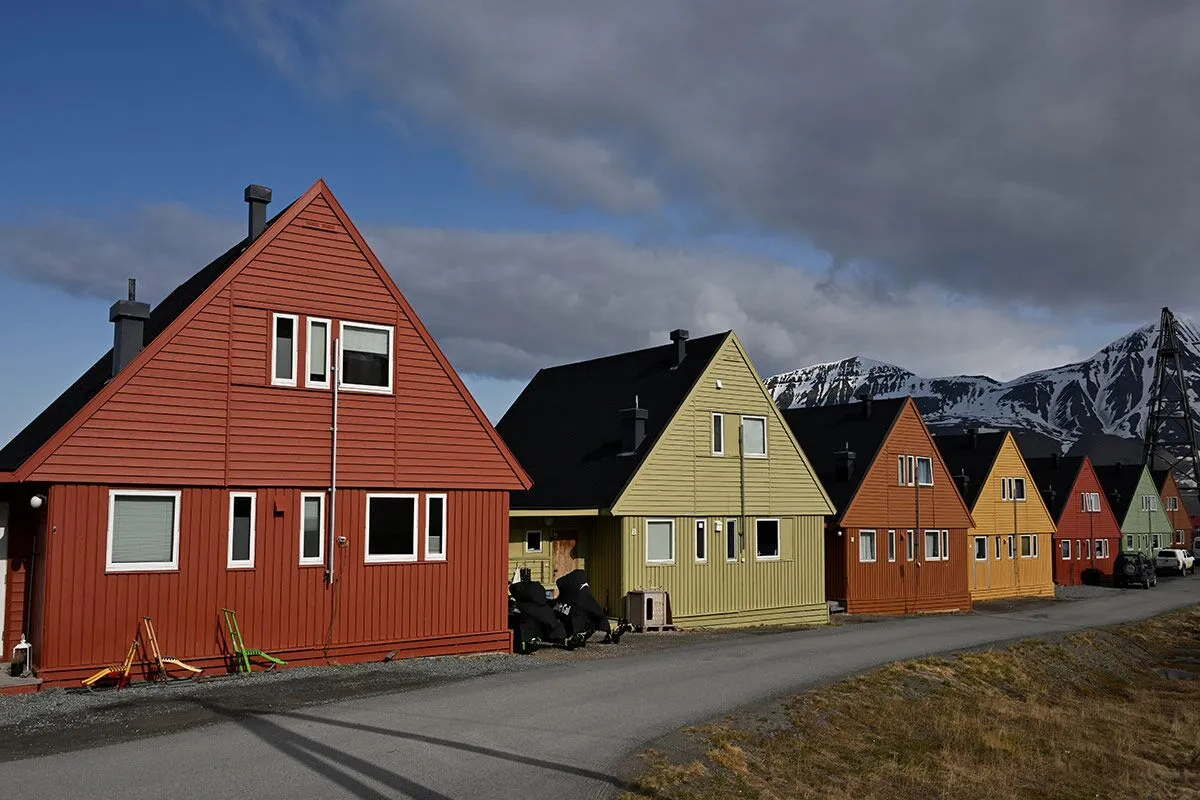 All Aboard in Longyearbyen!
All Aboard in Longyearbyen!
Begin your journey in Norway and arrive in Longyearbyen, Svalbardâthe northernmost town on Earth. Despite its remote Arctic location, Longyearbyen offers warm Nordic hospitality. Upon arrival, youâre greeted by crisp polar air, dramatic mountain views, and a polar bear warning sign reminding visitors of their wild new location. Your expedition ship Ocean Albatros awaits you in the harbor; toast your departure from civilization as you sail into the Arctic wilderness, on course for adventure!
Day 2
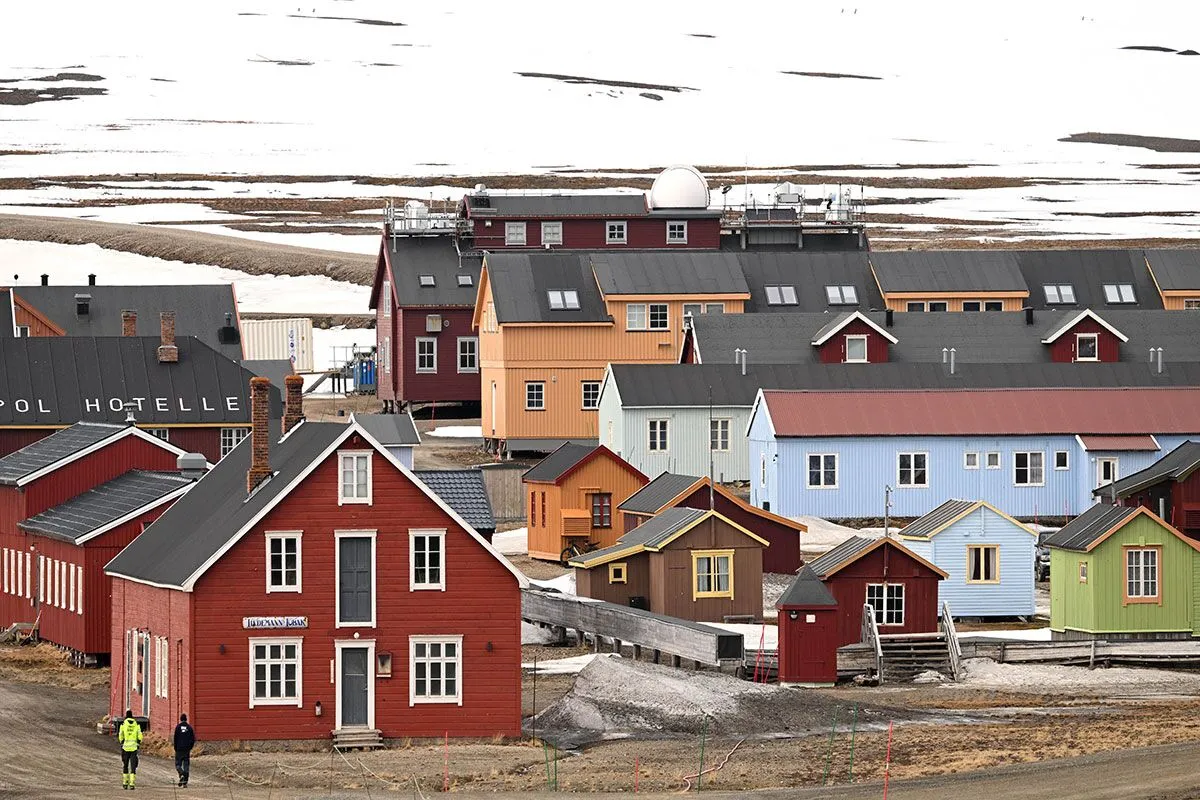 Kongsfjorden Region, Northwest Svalbard
Kongsfjorden Region, Northwest Svalbard
During the Arctic ânight,â we sail past Prins Karls Forland to the stunning Kongsfjord, framed by glaciers and the dramatic Three Crowns mountains. The first stop is Ny-Ã
lesund, Earthâs northernmost settlement, known for its scientific stations and historic role as a base for legendary polar explorers like Amundsen and Nansen. This remote outpost continues to support vital research amid its breathtaking surroundings.
Day 3
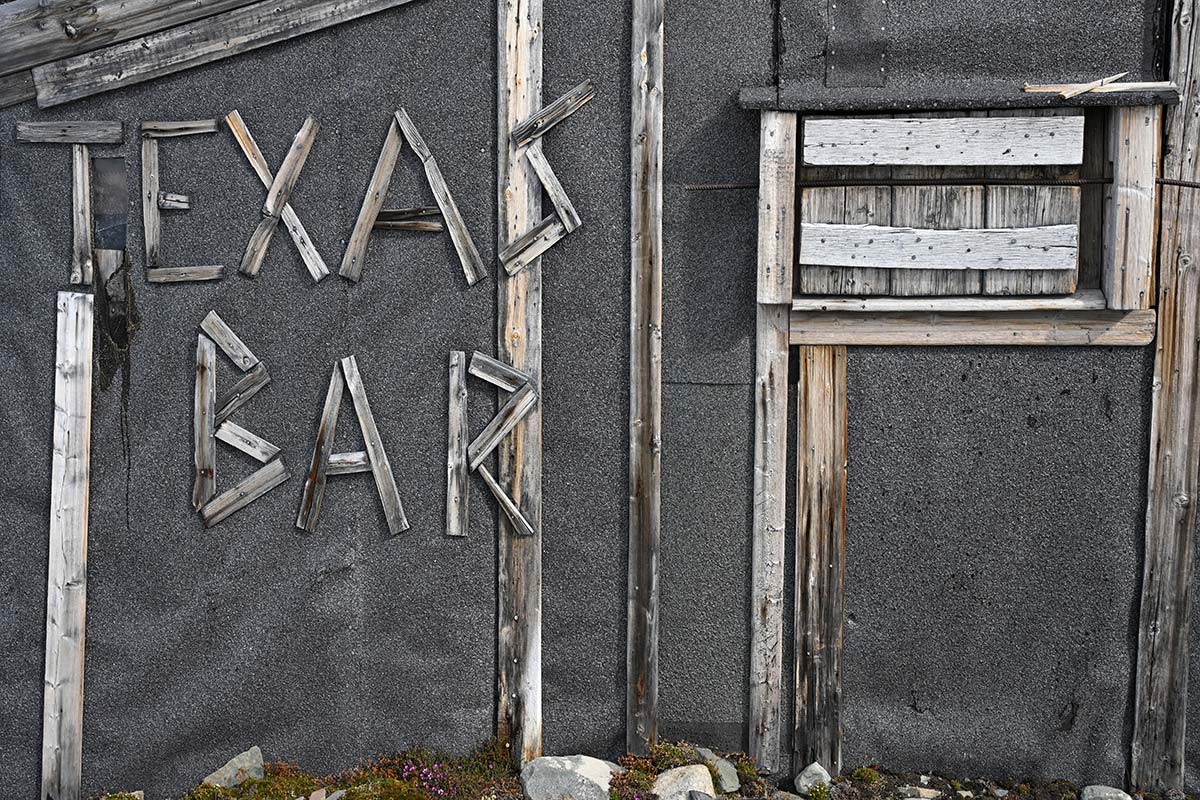 Northwest Svalbard
Northwest Svalbard
North West Svalbard, a National Park since 1973, preserves a rich history of early Arctic exploration and whaling. First visited by William Barents in 1596, the area became a hub for Dutch and English whalers. Their haunting remnants, such as the blubber ovens, and graves of young sailors at Smeerenburg, remain visible. Now heavily protected, the region has been reclaimed by nature, hosting Arctic flowers, seabirds, walrus, and polar bears, making it once again a pristine wilderness and haven for wildlife.
Day 4
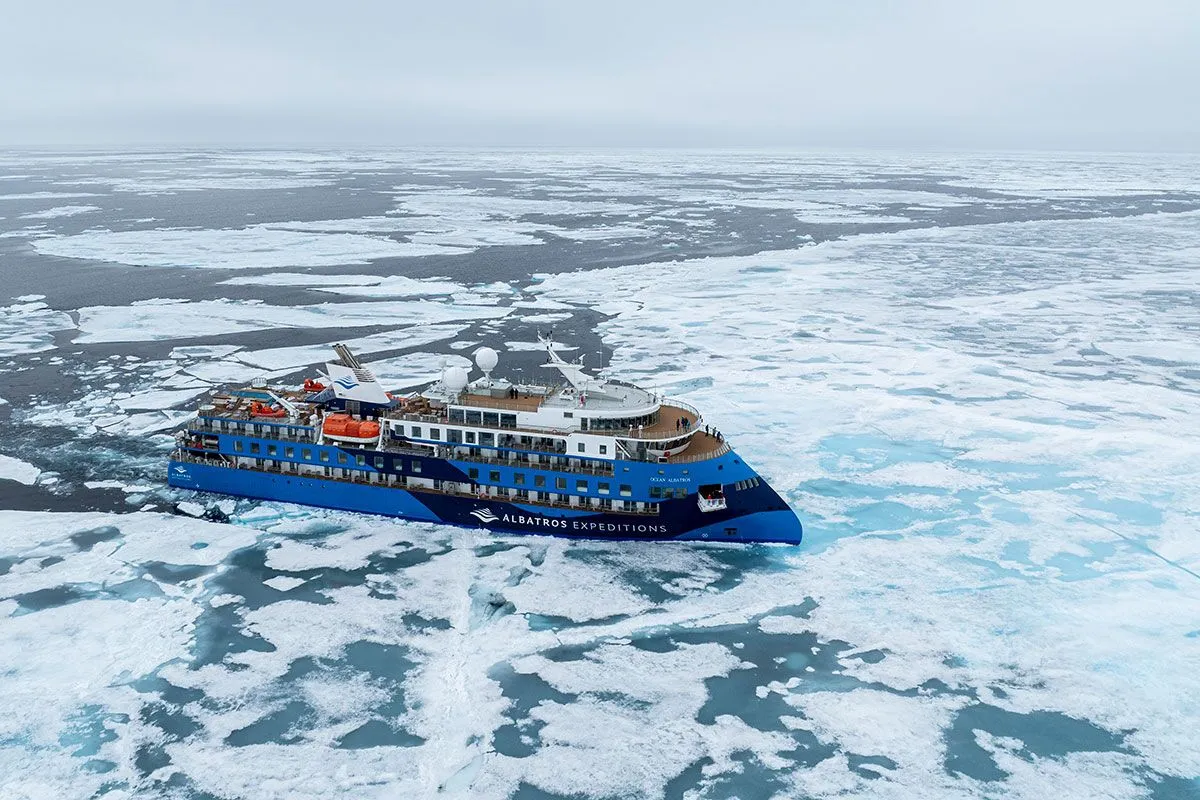 Into the Ice
Into the Ice
The Arctic ice pack north of Svalbard is a vast, everchanging wilderness, shifting seasonally and stretching beyond the North Pole to Alaska and Siberia. Though seemingly barren, this icy habitat supports diverse wildlife, from fish and seabirds, to seals, belugas, and bowhead whales, and is the preferred hunting ground of polar bears. The Ocean Albatros navigates through ice channels to explore this remote environment, hunting for wildlife, ending the day cruising toward the Hinlopen Strait between the islands of Spitsbergen and Nordaustlandet.
Day 5
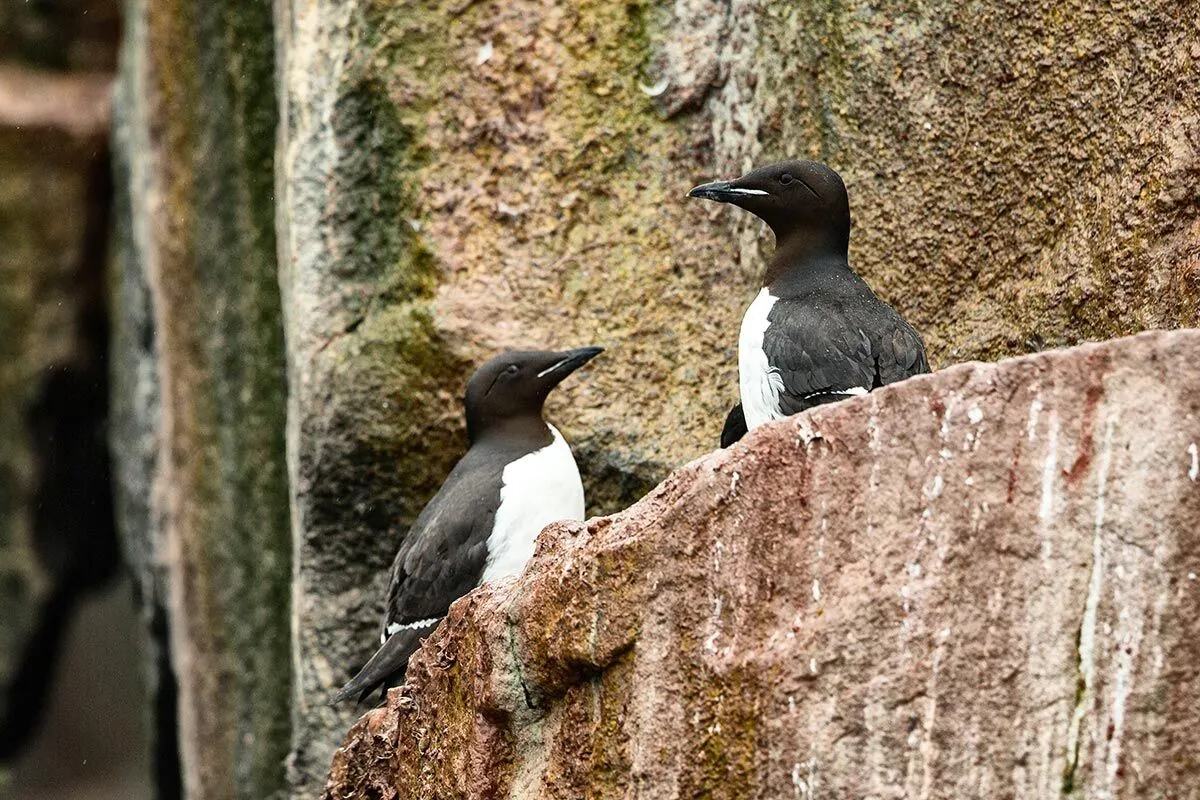 Northeast Svalbard
Northeast Svalbard
From the Arctic ice, the journey continues into Hinlopen Strait, where towering cliffs host some of the worldâs largest seabird colonies, crowded with guillemots and fulmars amid predatory skuas and gulls. The unearthly polar deserts of northeast Svalbard are surrounded by iceberg-studded seas, where vibrant marine life thrives. Walruses rest onshore, belugas frolic in pods, and scampering shore birds feast on the beaches, showcasing Svalbardâs rich biodiversity despite the harsh Arctic conditions.
Day 6
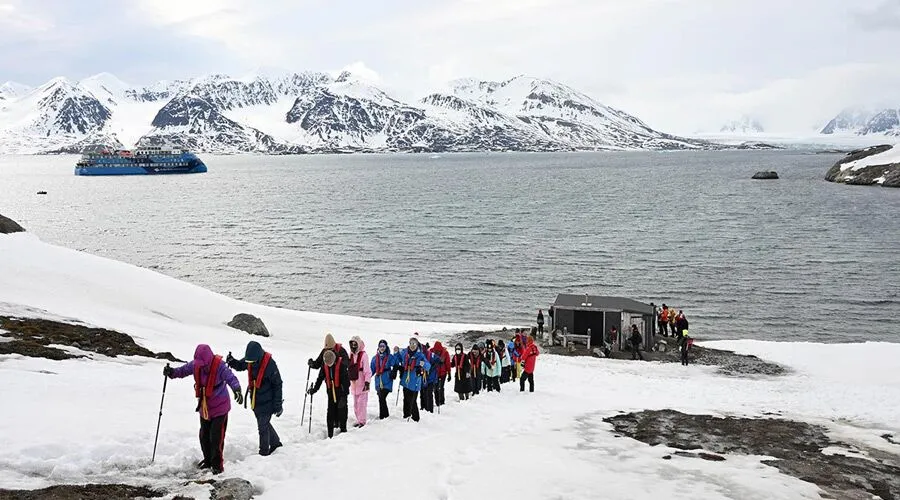 East Svalbard
East Svalbard
In Eastern Svalbard, cold polar waters meet the weak last gasp of the Gulf Stream, and the ocean remains icy even under the midnight sun. On Edgeoya, evidence of past large-scale walrus and beluga hunting contrasts with todayâs strict wildlife protections and extensive nature reserves. Highlights we may visit include the geological marvels and walrus colonies at Andreetangen and Kapp Lee, or the vast bird colonies at Sundneset, before we return toward the main island of Spitzbergen via Sorkapp.
Day 7-8
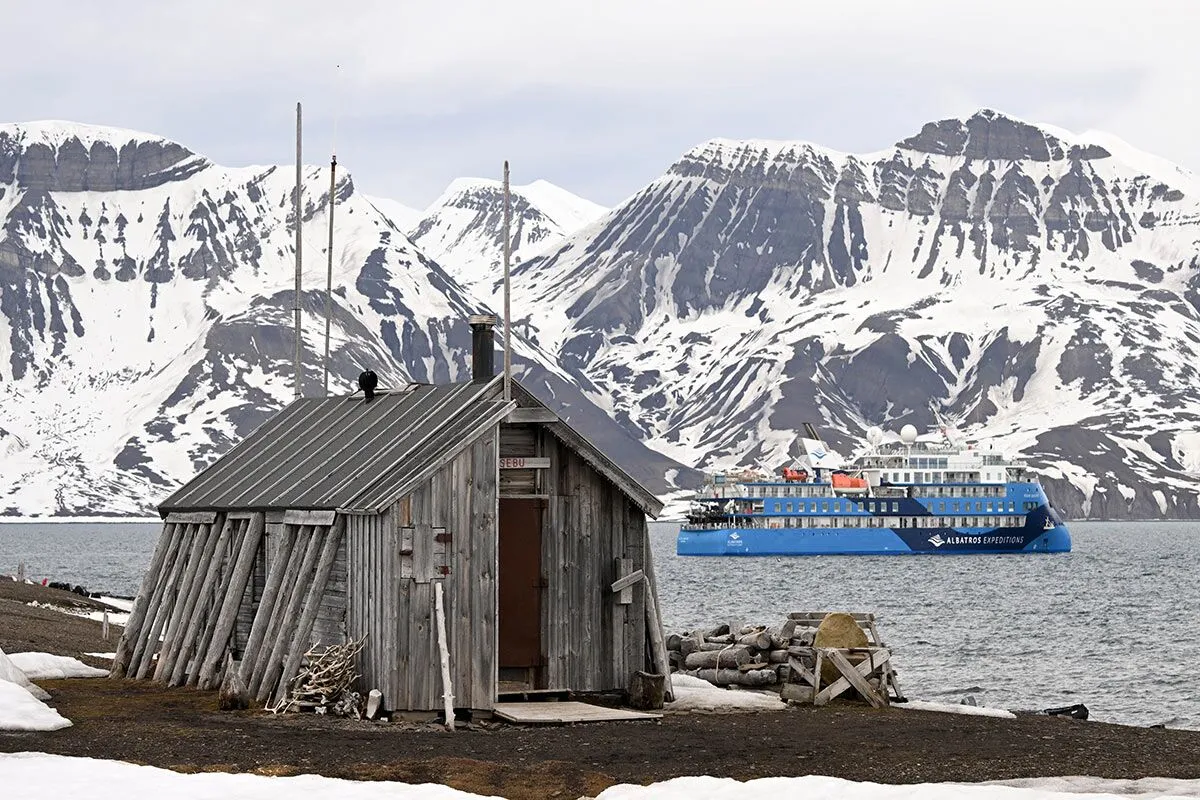 South Svalbard
South Svalbard
After rounding the southern tip of Spitsbergen, the expedition enters the greener, warmer fjords of Bellsund and Hornsund, nourished by Atlantic currents. These fertile valleys support reindeer, Arctic foxes, nesting seabirds, and drifting icebergs from nearby glaciers. Rich in wildlife and history, the area offers highlights like the grassy meadows of VÃ¥rsolbukta and the historic sites of Calypsobyen and Bamsebu, making it one of Svalbardâs most diverse and captivating regions.
Day 9
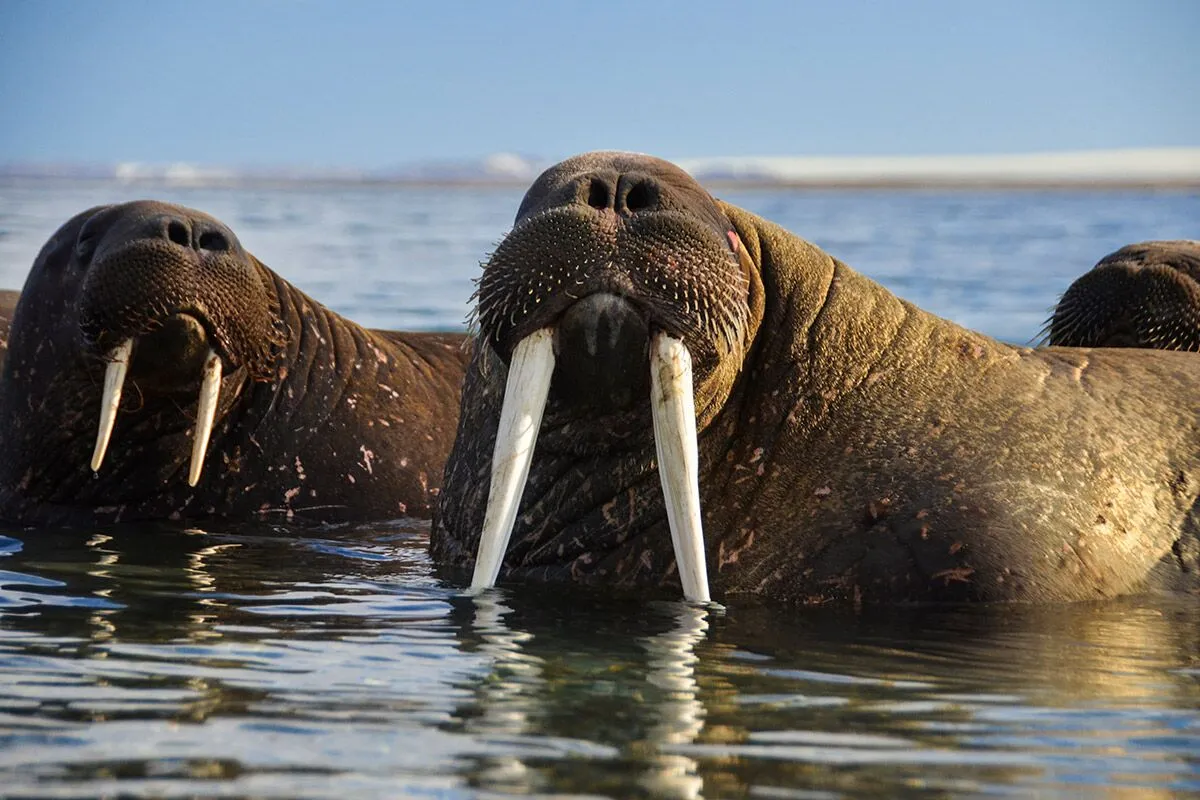 West/Central Spitzbergen
West/Central Spitzbergen
During the night we will enter Forlandssundet, the strait which separates Prince Karls Forland from Spitsbergen. Our destinations may include Poolepynten (Poole Point), a small headland named after the British whaler Jonas Poole. Today the area is inhabited by herds of walruses who can be seen (and smelled!) from a distance. The large mammals flaunt their tusks and whiskers, as well as their considerable bulk. The remote beaches, rugged mountains, and tundra plains of the region positively beg to be explored! From Forlandsundet, we will return southwards during the afternoon into Isfjorden, all the while on the lookout for wildlife and spectacular views as we return to civilization.
Day 10
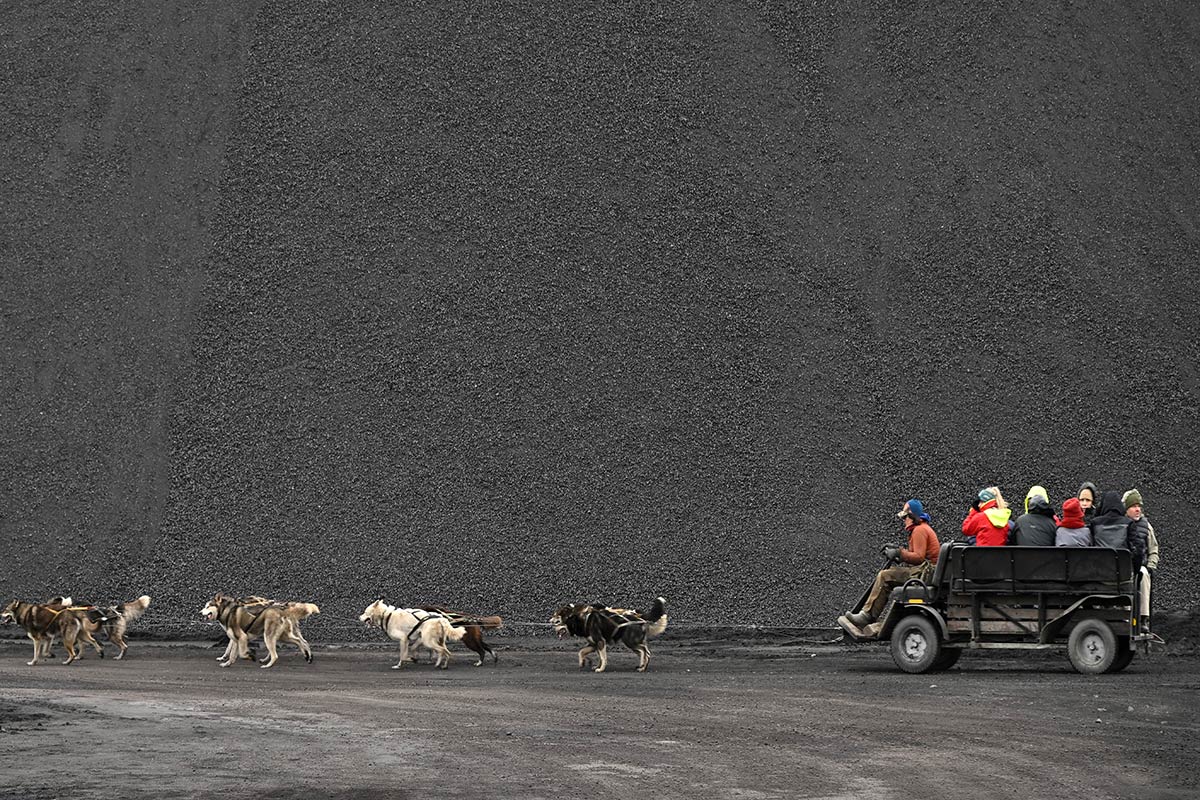 Longyearbyen Disembarkation
Longyearbyen Disembarkation
On the final morning of our expedition, we arrive back in Longyearbyen. Even this small town will feel like a metropolis after days of isolation in the wilderness of the Arctic!
After exploring Longyearbyen and bidding a fond farewell to the crew of Ocean Albatros and your fellow Arctic explorers, return to Svalbard Airport and join your flight back to the Norwegian mainland- with memories to last a lifetime.
8 Days - Adriatic jewels from Dubrovnik to Venice
Cruise Line: Variety Cruises
Ship: Callisto
Sailing Dates: Jul 03 2026
Port: Dubrovnik to Venice
8 Days - Adriatic jewels from Dubrovnik to Venice
Day 1 | Saturday
DUBROVNIK
Boarding takes place at Dubrovnik Gruz Port. Before we set sail, our dedicated VARIETY CRUISES crew will conduct a crucial safety drill to ensure your well-being. Join us for a welcome cocktail and dinner, where we'll have the chance to get acquainted and enjoy a delightful evening together!
Day 2 | Sunday
KOTOR, MONTENEGRO
In the morning, we arrive in Kotor, Montenegro, known for its medieval architecture and stunning scenery. The UNESCO-listed Old Town features cobblestone streets, charming squares, and historic buildings. Explore independently or join our optional tour of Kotor and the Lovcen Mountain massif, offering panoramic views of Kotor Bay and Montenegro's rugged mountains. Sample local Njeguski prsut (prosciutto) with a refreshing beer or homemade liqueur. Dinner on board, then departure to Korcula. Overnight at sea.
Day 3 | Monday
KORCULA, CROATIA
In the morning, we arrive at Korcula, a picturesque Adriatic island known for its medieval architecture and stunning coastal views. Often called "Little Dubrovnik," its historic Old Town features charming stone buildings and narrow streets. Birthplace of Marco Polo, Korcula blends history, culture, and natural beauty.Explore on your own or join our optional tour to discover Korcula's wine heritage at Bire Winery, tasting the unique Grk wine. Wander the enchanting lanes of the Old Town, a compact maze best explored on foot. Enjoy the afternoon at your leisure before joining our included dinner on board with fellow travelers.
Day 4 | Tuesday
SPLIT, CROATIA
In the morning, we arrive in Split, Croatia's vibrant coastal city known for the stunning Diocletian's Palace, a UNESCO World Heritage site. Split blends ancient history with a lively modern atmosphere, offering picturesque waterfront views, bustling markets, beautiful beaches, rich culture, and delicious Mediterranean cuisine.Explore Split on your own or join our optional Split & Trogir tour. Visit highlights like Diocletian's Palace and Trogir, known as "Little Venice." Enjoy a panoramic ride through the Kastela area and discover historical spots featured in Game of Thrones. Dinner on board and overnight at port.
Day 5 | Wednesday
SIEBENIK, CROATIA
In the morning, our ship docks in Sibenik, a historic city on Croatia's Dalmatian coast renowned for its medieval architecture and stunning waterfront. The city's highlight is the UNESCO-listed St. James Cathedral, a remarkable stone masterpiece. Explore the city independently or join our optional Siebenik & Krka Waterfalls tour. Discover the natural beauty of Sibenik and Krka Waterfalls, learning about the city's history and visiting key landmarks like St. James Cathedral. Then, marvel at the waterfalls in Krka National Park before enjoying dinner on board with fellow travelers.
Day 6 | Thursday
SENJ, CROATIA
In the morning, we arrive in Senj, a historic town on Croatia's Adriatic coast celebrated for its medieval architecture and rugged shoreline. Dominated by the impressive Nehaj Fortress, offering panoramic views of the sea and landscape, Senj boasts a rich cultural heritage. Its charming streets, ancient churches, and vibrant local traditions create a unique and inviting atmosphere.You can explore Senj independently or join our optional tour to the enchanting Plitvice Lakes, featuring sixteen turquoise-colored lakes and over a hundred waterfalls amidst pristine mountain forests and fresh air. Tonight, join us for a Captainâs Dinner on a Mediterranean Feast Night, featuring tantalizing flavors and nostalgic music! We depart around midnight for Rovinj.
Day 7 | Friday
ROVINJ, CROATIA
In the morning, we arrive in Rovinj, a charming coastal town in Croatia known for its picturesque old town, with colorful buildings lining narrow cobblestone streets. Explore independently or join our optional truffle hunting & wine tour. Taste your way through the Istrian countryside on this private excursion, visiting Livade, the truffle center of the world, and witnessing the largest white truffle ever found. Participate in a truffle hunt with your guide and truffle-sniffing dog, then visit a wine cellar to sample local wines and regional tapas. Enjoy personalized attention and the freedom to experience the countryside at your own pace.
Day 8 | Saturday
VENICE
In the morning, we'll reach Venice, the enchanting "City of Canals". Disembarkation is at 9 am after breakfast. Our attentive cruise manager will assist you with pre-booked transfers, ensuring a seamless transition to your next adventure. We look forward to welcoming you back aboard one of our VARIETY CRUISES wherever your travels take you next.
8 Days - LA Dolce Vita
Cruise Line: Variety Cruises
Ship: Variety Voyager | Callisto
Sailing Dates: Jul 04 2026 | Aug 08 2026 | Sep 05 2026 | Sep 19 2026 | Oct 03 2026
Port: Naples to Malta
8 Days - LA Dolce Vita
Day 1
NAPLES, ITALY
Embarkation 2-4pm. Overnight at sea.
Day 2
CAPRI, ITALY
This morning, after a sumptuous breakfast on board, drop anchor at Capri. Located in the Tyrrhenian Sea directly south of Naples, Capri has been a popular resort destination since the time of the Romans. With its impressive scenery, clear skies, and perfect climate, it has earned its reputation as the âjewelâ of the Bay of Naples. Here starts our optional half day Capri excursion; we take the islandâs iconic funicular from Marina Grande to the village of Capri and then we set off on a guided walk to the Gardens of Augustus, which offer sweeping views of the sea and the stacked rock formations off the coast and visit also the iconic, bustling Piazzetta which, being the centre of Capri, is the focal point of life on the island. We will have some free time to explore the area before returning via the funicular to the port. Lunch is served on board the ship, with the rest of the afternoon is yours to relax before dinner. Overnight at sea to Amalfi.
Day 3
AMALFI OR SORRENTO, ITALY
After breakfast on board, we will spend the morning on the breathtaking Amalfi or Sorrento coast, with its cliff-top villas, azure coastline and luxury boutiques. Optional half day excursion. In the late evening, take in the view as we cruise past Stromboli, an active volcano off the northern coast of Sicily. Overnight at sea to the Aeolian Islands.
Day 4
LIPARI, ITALY
Morning arrival in Lipari, the largest of the Aeolian islands and scattered with important archeological sites; ruins and remains here date back to 1700 BC and include Neolithic stones, ancient tombstones, Greek walls, and Roman villas. Join our optional morning tour to learn about them, as well as the 16th Century Spanish castle and 12th Century harbour Cathedral. Afternoon at leisure. Overnight in Lipari.
Day 5
TAORMINA - GIARDINI NAXOS, ITALY
After breakfast, the ship heads to Taormina and the charming seaside village of Giardini Naxos. The area, having been settled for even before the Greeks founded Naxos in 743 BC, is a popular destination for sun, sand, and sea. On our optional Taormina tour we will discover the villageâs narrow alleyways, along with the fifteenth-century Palazzo Corvaja and the impressive Greek amphitheatre, which boasts extraordinary acoustics, before we take a stroll along the Corso Umberto, a pedestrian street which crosses Taorminaâs centre. Flanked on both sides by upscale boutiques selling clothes, jewellery and souvenirs, we will understand why Taormina is called the âSicilian Saint Tropez.â In the afternoon, enjoy the view as the ship cruises towards Catania. Overnight in port.
Day 6
CATANIA (FOR MT. ETNA), ITALY
Following breakfast, we set off in a private coach on a full-day excursion to Mount Etna, Italyâs largest active volcano, and Catania. Pass through Nicolosi, a small Sicilian village that has existed in the shadow of the volcano for centuries. A new road offers scenic views as it winds up the mountainâs slopes. Constructed after an eruption in 1983, it passes through vineyards, woods, and valleys of black lava. At approximately 2000 metres above sea level, the Rifugio Sapienza is the highest point of the mountain accessible by vehicle. We will take a short walk to the Crateri Silvestri, two sizable craters formed during a significant eruption in 1892, to admire 360-degree views of the Gulf of Catania. Lunch is served in a local restaurant overlooking the lava stream. Afterwards, continue to Catania. This city has long been dominated by Mount Etnaâs presence. We join our guide for a stroll through the city centre, including the Cathedral of Saint Agatha, the picturesque Piazza del Duomo, and the Fontana dellâElefante, which features a Roman-era elephant statue carved from Mount Etnaâs basalt. The walk continues along Via Crociferi which is lined by imposing churches emblematic of Cataniaâs Baroque architectural style, then stop at Piazza Stesicoro, one of the main squares in Catania, to admire the monument to Vincenzo Bellini, famed Romantic composer who was born here. The walk will continue back to the port. If you wish, you can continue exploring the town on your own. This afternoon, the ship sails towards Syracuse. Overnight at sea.
Day 7
SYRACUSE, ITALY
After breakfast on the ship, we can have a half-day tour to Syracuse, with its rich Greek and Roman history. The tour begins with a short drive to the Neapolis Archaeological Park, an open-air museum of Sicilian ruins. The spectacular Teatro Greco (âGreek Theatreâ) is among the most impressive amphitheaters to survive from antiquity. We will also visit the enigmatic Latomia del Paradiso, a limestone quarry which supplied stone for this ancient city. The Orecchio di Dionisio (âEar of Dionysusâ) is a 23 metre-high man-made cave known for its near-perfect acoustics, and the altar of Hieron II served as a site for animal sacrifices. After exploring the park, we drive to Ortygia, an island which is home to the remains of some of the cityâs earliest constructions. Here, we will discover the Temple of Apollo, the Fountain of Arethusa and a Baroque cathedral built over the remains of the famed Temple of Athena. After the tour, we return to the ship or enjoy some free time in the town. The rest of the afternoon is at your leisure. Departure late afternoon to Malta. Overnight at sea to Malta.
Day 8
VALLETTA, MALTA
Breakfast in Valletta Port, then time to say goodbye. For now. We hope to see you on another one of our cruises soon!
Islands and cities, from the North Sea to the Baltic
Cruise Line: Ponant Cruises
Ship: Le-Champlain
Sailing Dates: Jul 06 2026
Port: Fredrikstad to Helsinki
Islands and cities, from the North Sea to the Baltic

Day 1 - Fredrikstad
Nestling on the shores of the Glomma estuary, Fredrikstad captivates with its rich historical heritage, picturesque canals and warm atmosphere. Founded in 1567, the fortified old town still has traces of its rich past. Fall under the spell of its cobbled narrow streets, edged with traditional old wooden buildings, boutiques and lively cafes, and also discover the extremely well-preserved ramparts, built almost 5 centuries ago. Nature enthusiasts will also appreciate the magnificent hiking paths along the Oslo fjord and surrounding islands, such as Hankø, with its idyllic beaches and lush plains.

Day 2 - Aalborg
In the very north of Denmark, on the banks of the Limfjorden sea,the Viking town of Aalborg opens its welcoming arms. A must-see is the Aalborg tower standing like a lighthouse in the middle of the town. At the top, a magnificent view of the surroundings awaits your visit. Several museums, including the Utzon Centre, propose a sample of local artistic creation. As far as shopping goes, the famous JomfruAneGade street and its district, include some of the most beautifulDanish fashion boutiques as well as numerous restaurants and cafés where you might try one of the countryâs specialities such as âplatteâ
2 available excursions
Trip to Marstrand, a Swedish beauty, Strolling the streets of Marstrand

Day 3- Copenhagen
Connected to the far eastern side of Sealand island, a few kilometres away from the Swedish coasts, Copenhagen offers you the high colour of Scandinavian capitals. You can discover the city's riches that weaves through the canal networks through the historical districts of Christiansborg and Nyhavn. Many palaces provide an apercu of Danish history. For eating, you can try out the smorrebrod, traditional danish sandwiches made with ham, cheese or smoked fish.
3 available excursions
City tour & canal cruise, Royal Highlights, Kayaking in the Canals of Copenhagen

Day 4 - Gudhjem, Bornholm
Lying in the south-west of the Baltic Sea, the medieval village of Gudhjem, on the island of Bornholm, is one of the most visited and most popular villages in Denmark. As you stroll along its picturesque streets, you will fall under the spell of its varied landscapes, its easy way of life, and the authenticity of this charming town with half-timbered houses topped with red roofs, in the Danish tradition. It is here, along these charming streets, that the first herring smokehouses were built in the mid-19th century, attracting all the regionâs fishermen. Tucked away in a gorgeous natural setting composed of rocky cliffs, dense forests and beaches of white sand, Gudhjem will provide an unforgettable interlude where time will seem to stand still.
2 available excursions
Nature and villages of Bornholm, The best of Bornholm

Day 5- Visby, Gotland
This old Hanseatic city lies to the west coast of Gotland, a Swedish island in the Baltic sea. Pass through the spectacular Visby fortifications and visit the old town, a UNESCO World Heritage site. Youâll discover the grand Visby homes of rich merchants as well as the lovely low wooden houses in the little cobbled streets. Donât miss Saint Maryâs cathedral with its octagonal steeples, as well as Powder tower along the fortifications. Make sure you stop over in one of the rose-adorned cafés; indeed roses abound in this town where you can taste one of the islandâs specialities, namely saffron pancakes with red fruit.
1 available excursions
Visby on your own

Day 6 - Gdansk
This ravishing city on the Baltic sea is nicknamed âthe golden door of Polandâ, and youâll understand why when you see its beautiful Hanseatic architecture. Youâll be charmed by the mouldings and gables that enhance the colourful façades of the houses. Along the Vistula Quays, you can take a pleasant stroll among the crafts shops. In elegant Mariacka street, the amber jewellers will most certainly tempt you into their boutiques. You can visit the church of Saint-Mary and its astronomic clock. Not far, the majestic Long Market square offers the famous Artus Court and the rich Gdansk History Museum.
2 available excursions
Gdansk city tour & Chopin concert, Malbork Castle

Day 7-8 - Stockholm
The capital of Sweden occupies an archipelago in the east of the country at the junction of Mälar Lake and the Baltic sea. In Gamla stan, meaning âold townâ in Swedish, you can stroll at your leisure in picturesque medieval streets until you reach the majestic Royal Palace. On the green island of DjurgÃ¥rden, you can visit several very different kinds of cultural centres: the Vasa museum is dedicated to a 17th century three-mast, the ecomuseum of Skansen presents traditional customs, and the ABBA museum is dedicated to the legendary pop group. For a fantastic, all-encompassing view of Stockholm, you can take a ride in SkyView, a glass-encased sphere gondola that takes you to the top of the worldâs largest building, the Ericsson Globe, a Stockholm landmark.
3 available excursions
Stockholm beauty land and water, Stockholm city tour & Vasa Museum, Stockholm & Sigtuna

Day 9 - Saaremaa
Welcome to Estoniaâs largest island, Saaremaa, with its age-old history and mysterious charm. Located in the Baltic Sea, it closes off the Gulf of Riga. The episcopal castle, a medieval fortress and preserved witness of the rich history of the Baltic States, stands proudly in the islandâs capital, Kuressaare. The islandâs soils and mild climate give it abundant and diverse nature, where forests, cliffs, dunes and beaches flourish, becoming a haven for thousands of migratory birds every year. The island offers many treasures, between wild nature, nature reserves, meteor craters and windmills.
4 available excursions
Kuressaare and its beer-brewing tradition, Landscapes and heritage of Saaremaa, Saaremaa, pearl of the Baltic Sea, Traditional farm, folk show and visit of Kuressaare

Day 10 - Tallinn
Opening onto the Baltic sea, to the far north of Estonia, the town of Tallin will win you over with the picturesque charm of its architecture. You can meander through its little streets in the heart of the medieval centre where its gothic town hall has been standing since 1404. The Kiek in de Kök tower, the Orthodox Alexander Nevski cathedral, or Toompea castle give visitors a taste of this townâs rich past. The city was particularly active during the medieval period, as is demonstrated by the very beautiful monuments from this period that are still visible. Don't hesitate to lose yourself in the heart of Tallinn, listed as a UNESCO World Heritage Site.
4 available excursions
Gothic treasures of Tallinn, Tallinn & folklore, Historic sights of Tallinn and Kadriorg Palace, Discover the Estonian cuisine

Day 11 - Helsinki
Seated in the southern peninsula of Finland, Helsinki offers the buzz of a cosmopolitan city that has opted for both elegance and beauty. Explore its historical centre where the soft hues of neoclassical buildings are juxtaposed with spectacular modern constructions. The bustling Kallio district is teeming with boutiques and restaurants where you can taste some local specialities like graavilohi - a sweet, marinated, aromatic salmon dish. Keskuspuisto park, a stoneâs throw from the centre, is a good place to sit and unwind.
3 available excursions
Helsinki highlights, Suomenlinna Fortress, Kayaking the Helsinki archipelago
6 Days - Treasure Troves of Corsica & Sardinia
Cruise Line: Windstar cruises
Ship: Wind Spirit | Star Legend
Sailing Dates: Jul 09 2026 | Jul 23 2026 | Aug 20 2026 | Jul 15 2027
Port: Rome to Rome
6 Days - Treasure Troves of Corsica & Sardinia
*Prices are per person, based on double occupancy. Prices do not include Government Fees & Taxes. Pricing and availability subject to change without notice. STIC Travel Group reserves the right to refuse or honor any prices / sailings that are erroneously printed or quoted. Terms & Conditions apply.

Contact
2nd Floor, Tower C, Cyber Greens, DLF Phase-III, Gurgaon - 122002, Haryana, India. Phone: +91-124-4595300 E-mail: info@sticgroup.com International Cruise Tour: +91 9920688575
We Accept: 
Secured By: 
Copyright © STIC GSA Services Pvt. Ltd. All rights reserved

